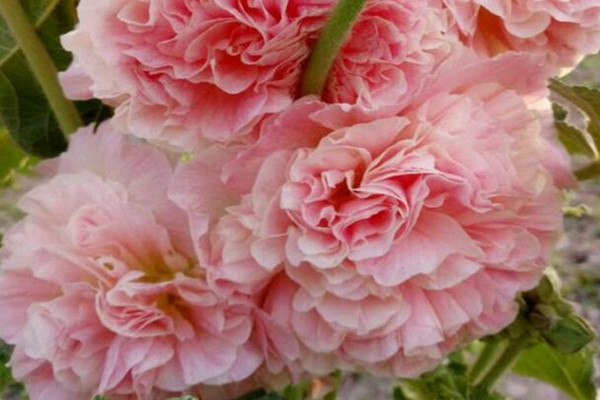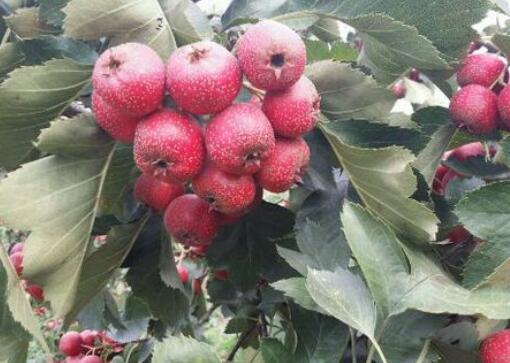When does hollyhock blossom? How to plant it? What are the effects and effects?
Hollyhock, also known as Yizhang Hong, big Shu season, military sunflower. Originated in Sichuan, China, it is widely distributed in China, including East China, Central China and North China. It is cultivated all over the world for ornamental use. So, when does hollyhock blossom? How to plant it? What are the effects and effects?

When does hollyhock blossom?
Because it originated in Sichuan, China, it is called "hollyhock". And because it can reach Zhang Xu, most of the flowers are red, hence the name "Yi Zhang Hong". It blossoms when the wheat is ripe in June, and is named "barley ripe".
How to grow hollyhocks?
1. Lighting: hollyhocks like sunny environment and withstand semi-shade. At ordinary times, hollyhocks should be placed in a place where the sun shines directly and be exposed to sunlight.
two。 Temperature: the hollyhock is hardy, and the upper branches wither and die in winter, but the underground roots can survive the winter in the open field and sprout again next year. You can safely spend the winter in the open field in North China. The growth temperature of hollyhock is 25 ℃-30 ℃, and the most suitable temperature for flowering is 26 ℃-28 ℃. The monthly average temperature is lower than 17 ℃, and the night temperature is lower than 14 ℃.
3. Watering: usually pay attention to watering, keep the soil moist, but not overwatering, hollyhock afraid of waterlogging. Hollyhocks should be properly watered during flowering so as to prolong flowering period and increase flower quantity.
4. Soil: hollyhock has strong adaptability to soil, strong saline-alkali tolerance, and can still grow in soil containing 0.6% salt. The growth trend is the best in the sandy soil with loose and fertile, good drainage and rich organic matter.
5. Fertilization: before planting hollyhocks, dig deep into the soil and add base fertilizer to the soil. During the growth period, liquid fertilizer mainly composed of nitrogen and potash was applied once or twice. After the formation of flower buds, the liquid fertilizer mainly composed of phosphorus and potassium fertilizer was applied once or twice.
Note:
1. Timely pruning: after the hollyhock blossoms, cut off the part of the ground in time, and new buds can sprout.
two。 Summer shade: due to strong light in summer, hollyhocks should not be exposed to the sun as far as possible, so as not to affect plant growth, should be appropriate shade, absorb scattered light.
3. Control plant height: in order to dwarf the plant, root cutting can be used to control the height, that is, the root is cut vertically at the left and right 10 cm of the plant root during the growth period, and then cut again 3 weeks after cutting. The more times the root is cut, the shorter the plant will be, which is suitable for potted plants.
What are the effects and effects of hollyhock?
1. Tender leaves and flowers are edible, the skin is high-quality fiber, the whole plant is used as medicine, it has the effect of clearing away heat and detoxification, relieving cough and diuresis.
two。 Root can be used as a lubricant for mucosal inflammation to protect and ease irritation.
3. Anthocyanins extracted from flowers can be used as food colorants. The whole grass is used in medicine, which can clear heat and stop bleeding, detumescence and detoxification, and treat hematemesis, blood avalanche and other diseases. Stem bark containing fiber can be used as a substitute for hemp.
Time: 2019-03-22 Click:
- Prev

What are the effects and effects of lemon eucalyptus? How to plant it? What are the market prospects?
Lemon eucalyptus is native to Australia and has been introduced in China for nearly a hundred years. It is cultivated in South China, Fujian, Zhejiang, Yunnan, Sichuan and other places. Known as the fairy in the forest. So, what are the effects and effects of lemon eucalyptus? How to plant it? What are the market prospects? What are the effects and effects of lemon eucalyptus
- Next

2018 how about the income of planting Hawthorn tree? How much is a seedling? What are the methods?
Hawthorn tree is a deciduous tree with nearly oval leaves, and its adaptability is strong, even in the thin mountains, its growth and development is better than other fruit trees. So how is the income from planting Hawthorn trees in 2018? How much is a seedling? What are the methods? Learned from manager Wang of Taian Seedling Company in Shandong Province.
Related
- Fuxing push coffee new agricultural production and marketing class: lack of small-scale processing plants
- Jujube rice field leisure farm deep ploughing Yilan for five years to create a space for organic food and play
- Nongyu Farm-A trial of organic papaya for brave women with advanced technology
- Four points for attention in the prevention and control of diseases and insect pests of edible fungi
- How to add nutrient solution to Edible Fungi
- Is there any good way to control edible fungus mites?
- Open Inoculation Technology of Edible Fungi
- Is there any clever way to use fertilizer for edible fungus in winter?
- What agents are used to kill the pathogens of edible fungi in the mushroom shed?
- Rapid drying of Edible Fungi

